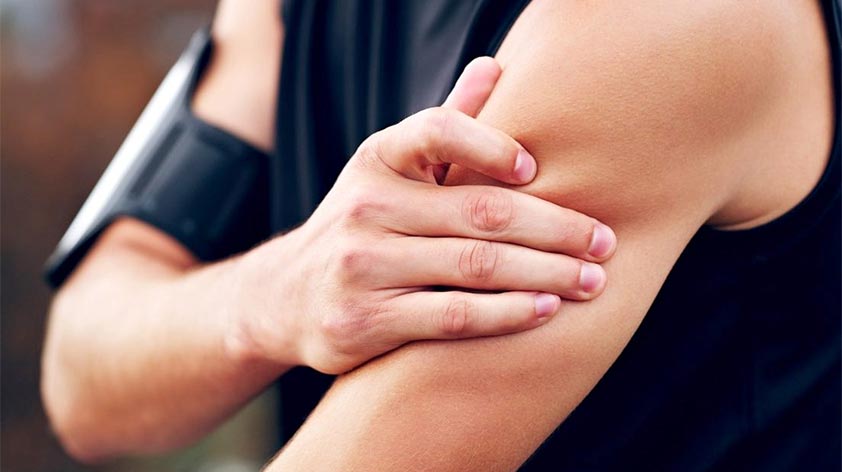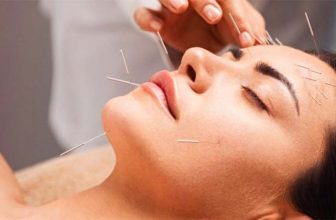
For many people, their ‘New Year’s resolutions’ are to get themselves fit and healthy by exercising regularly. But this resolution can appear as an extreme spurt of activity, and it’s often the hard way to go about things. The tendency towards injuries, knee pain, shoulder strain, muscle sprains, can skyrocket. An exercise injury can happen to anyone and can often be difficult to heal. Want to know how to recover from such workout injuries? Then read on for Workout Injuries: 5 Ways to Quickly Recover & Get Back in Shape!
1. Athletic Training for Muscle Strain & Knee Pain
Suppose your form is not correct while performing weightlifting and bench press exercises; you are likely to cause yourself muscle strain, which is very common. Practice warm-up and cool-down exercises before and after your workouts to help prevent injury. If you have a muscle injury, doing light stretching exercises will help you to recover fast. For example, keep cycling after an injury is a great way to get yourself back on track.
Knee pain (patellofemoral pain syndrome), sometimes called Runner’s Knee, happens when you are overusing your knees through a lot of bending. Doing high-stress exercises such as lunges or plyometrics can cause irritation inside and around the knee cap. The sprained ligaments usually recover quicker with some stretching of the quadriceps (thigh) muscles
2. Take Some Time Off to Rest
Sports injuries can pose a real challenge for anyone, particularly for professional athletes. You might feel devastated and overeager to get back in the gym or on the training ground training like before. But you should know how to deal with these setbacks in order to actually bounce back stronger than before. Rehabilitation exercises are highly beneficial, and resting up is crucial for recovery before that. Try taking short naps while getting some sports/athletic rehabilitation guidance.
3. Consult Your Physician for Medical Treatment
It is not safe to start rehabilitation before consulting a physician. Sometimes the injury can get worse if not treated in a timely fashion. For example, out of the two types of ankle strains, the inversion strains are most common, where the ankle is twisted inwards due to overuse during exercise. It happens when the anterior talofibular ligament is torn. In contrast, the eversion injuries are rare because it occurs when the ankle rolls outward. However, because of the tearing of the deltoid ligament, the bone can fracture as well.
For relief from pain, use cold/ice packs, and don’t move the ankle too much. Follow the RICE protocol: Rest, Ice, Compression, and Elevation. Include proprioceptive training and consult a physician to understand the severity of the condition and do what your physician advises.
4. Use Ointments
The topical application of ointments, gels, and even patches can help you with pain relief. But the ones containing counter-irritant ingredients such as menthol, camphor, and methyl salicylate work best in producing cool and hot sensations to block pain signals to your brain.
Although the relief is temporary, a topical treatment is better than shoving medicine into your stomach. The results are almost immediate. Plus, massaging the product by rubbing it into the skin helps to encourage blood flow, promoting tendon and ligament healing, as well as relaxing the muscles.
5. Regain Strength with Functional Drills
For smaller scale injuries, recovery can be rapid, but for chronic injuries, regaining previous decent levels of functionality, by increasing the strength of muscles is the main focus. Gentle ‘range of motion’ (ROM) exercises can commence under your physician and therapist’s guidance. There will be exercises that focus on balance and agility to help restore your mind-muscle coordination that may have been lost due to injury. Having a lower-extremity injury can be troublesome. You should be doing some low to medium intensity walking, treadmill, rowing, or cycling to cope with it. You should start some light stretching and/or throwing a tennis ball or rolled-up sock actions in the case of upper body-extremity injuries.
In summary, yes, you might feel disempowered and recovery might feel prolonged, but know that if you procrastinate to take care of yourself while injured, the chance for full recovery of muscle function and motion could be compromised by up to 30% or more, and you definitely don’t want that! Focus on taking it slow, you’ll make sure and steady progress. Keep a log of your recovery too – this will motivate you to tap into the miracles of your own mind power – perhaps for the first time in your life!
Have you recovered from a major injury or have some tips about how to recover from injuries rapidly? Feel free to share your thoughts on this topic in the comments below, and join in the conversation on Facebook, Twitter & Instagram!









